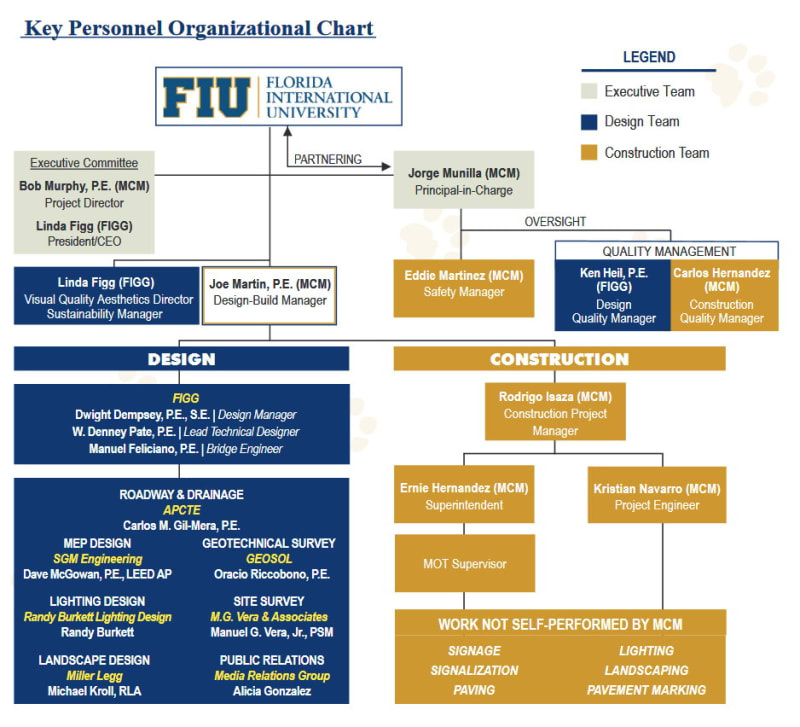After reading the ENR link posted by jrs_87: "What Florida Bridge Collapse Report Leaves Unexplained", I clicked on the author's name to see what else he may have written for ENR and then read this item by ENR co-authors Richard Korman and Scott Judy, "Did Concrete Error Doom Florida Bridge?"
Link. What eventually jumped out at me was the paragraph:
Under its design-build contract agreement, FIGG’s role explicitly states that it would not serve as a resident engineer but would “at appropriate intervals visit the site to determine if the construction is proceeding in accordance with the construction documents.”
When I was going through MCM's Contracts & Purchase Orders it became obvious that MCM was really only performing as the Construction Project Management firm and the actual Contractors, were all Subs. MCM was ranked 276, down from 245 in the 2015 ENR 400. So they were a big dog in construction but I was starting to get the feeling they didn't really have the chops to be doing this level of Heavy Civil Construction. It was one of the first things I looked at, when FIU made the Bid/Submittal packages available for public viewing.
Link I knew MCM had people on staff that were Florida Licensed Professional Engineers, but where were they on this project? Was MCM a
"General Engineering Contractor" on paper only? FDOT also doesn't give the CEI firm any engineering authority over design.
The FIU Request for Qualifications - Request for Proposals, pg 51 lists the requirements for the Design-Build Firm’s Project Manager.
Link. Specifically,
The Project Manager assigned by the Design-Build Firm must be proficient with the English language, and shall possess a Registered Professional Engineer License in the State of Florida and three (3) years of specific experience in construction management on limited access facilities or have a minimum of five (5) years of specific work experience providing construction management in limited access highway facilities.
Here is the organizational chart MCM submitted with the proposal on September 30, 2015.
The Design-Build Manager for MCM was one, Joe Martin, P.E. (LinkedIn:
Link) The chart wasn't worth the paper it was printed on. Joe Martin, P.E. left MCM in October 2015 for Odebrecht. His role seems to have remained unfilled and the FIU Bridge Project put under the management of Rodrigo Isaza (LinkedIn:
Link). You can see MCM's descriptions of Mr. Martin & Mr. Isaza starting on pg. 25, of their submittal.
Link
It is entirely possible that Rodrigo Isaza met the minimum of five 5)years of specific work experience providing construction management in limited access highway facilities but there was a clear lack of critical understanding & thinking related to the execution of the work.
Using a 19th century nautical comparison. MCM was a big dog and as such, when they sailed into port, they anchored and waited their turn, to unload and load but when they weighed anchor and headed out to sea; they were just dog legging, direct reckoning sailors, who made the error of thinking they could blue water sail without a Celestial Navigator.

![[surprise] [surprise] [surprise]](/data/assets/smilies/surprise.gif)
